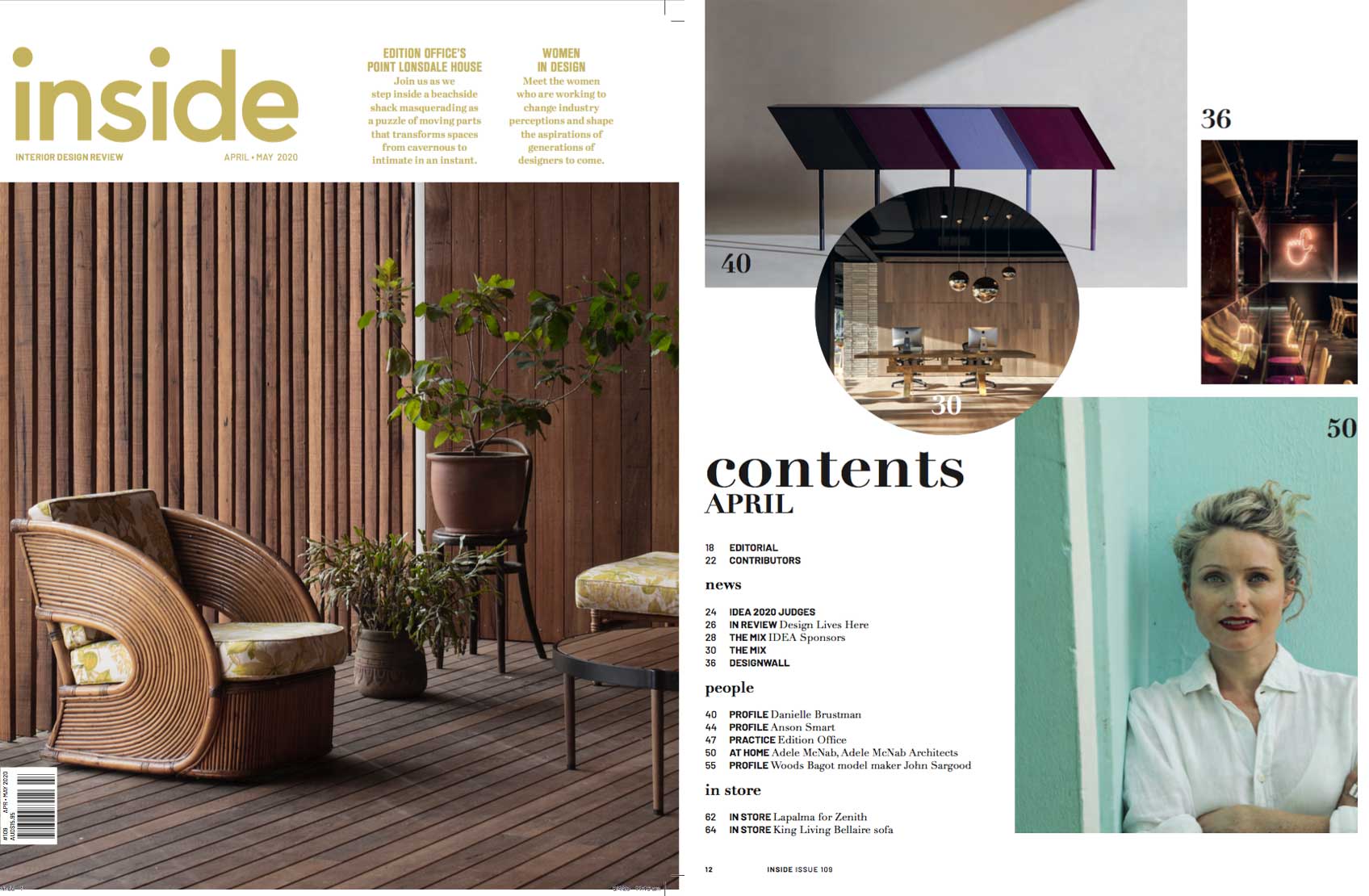
“I’m always asking myself how does colour affect one’s life and space?” – Danielle Brustman
“I’m always asking myself how does colour affect one’s life and space?” – Danielle Brustman
Share
Fresh from her solo exhibition at Melbourne Design Week, set and interior designer Danielle Brustman says she has always been drawn to colour and how it can manipulate our mood.
Our relationship to colour is an intensely personal thing. To childhood declarations of favourites to wardrobes filled with shades that suit and hushed whispers of ‘blue and green…’, colour is one of the tools in our arsenal of personal definition, and that goes double if you define yourself as an interior designer. Triple if you happen to be Danielle Brustman.
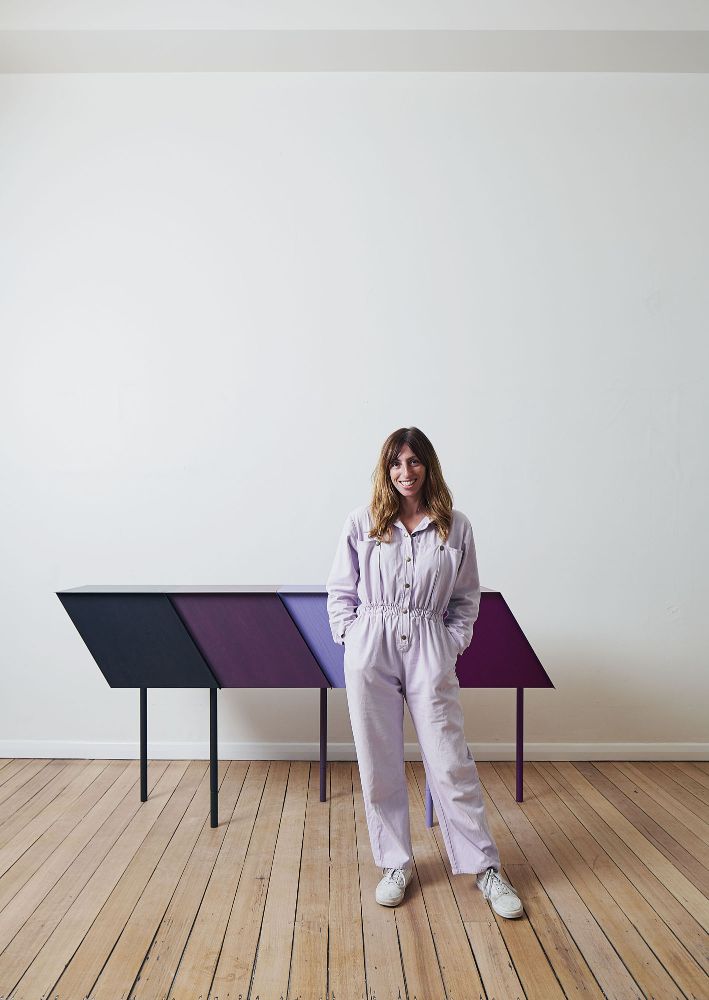
Melbourne-based Brustman is not an interior designer, at least not exclusively. Instead she is suspended somewhere between the worlds of furniture designer, interior designer and exhibition designer, and it’s a position she relishes.
“I don’t call myself an artist and I’ve never thought of myself as someone who might even get the opportunity to exhibit in galleries. But that’s been happening more and more recently and I’m very pleased,” she says.
“I’m very excited about the future and how the different sides of my practice cross over and meld together.”
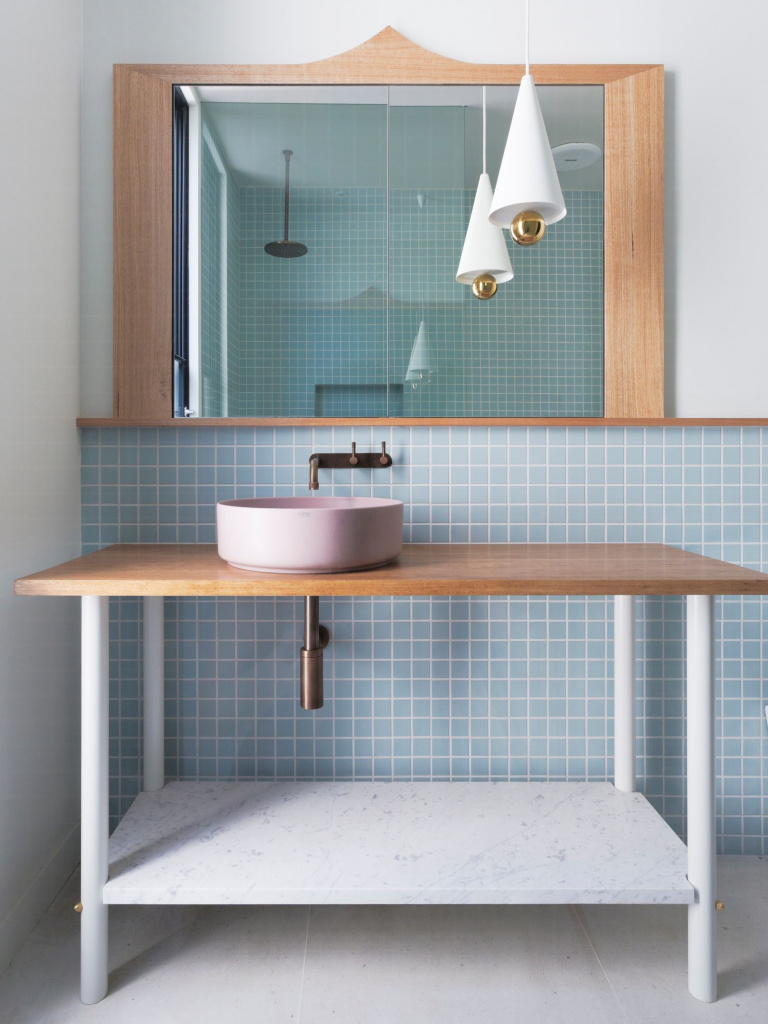
Brustman has just completed her first solo exhibition at Melbourne Design Week. Presented by Sophie Gannon Gallery, Designwork is usually a joint exhibition, but Brustman was personally chosen by Gannon to appear solo in the fourth of an ongoing series dedicated to presenting the best contemporary Australian design.
Her exhibition, Chromatic Fantastic (which ran from 11 to 28 March this year), explored Brustman’s lifelong fascination with colour – not wheels and palettes and perfect pairings, but our relationship with hues.
“I’m always asking myself how does colour affect one’s life and space, the things we use to occupy that space and the impact it has?
“There’s this very personal notion of equilibrium I often think about when I’m choosing my colour schemes and when I’m pairing things together, and playing around with things that are complementary, but then are also not so complementary,” she adds.
“Within that tension is a kind of beauty and a balance. It’s a very personal explanation that I use in my work.”
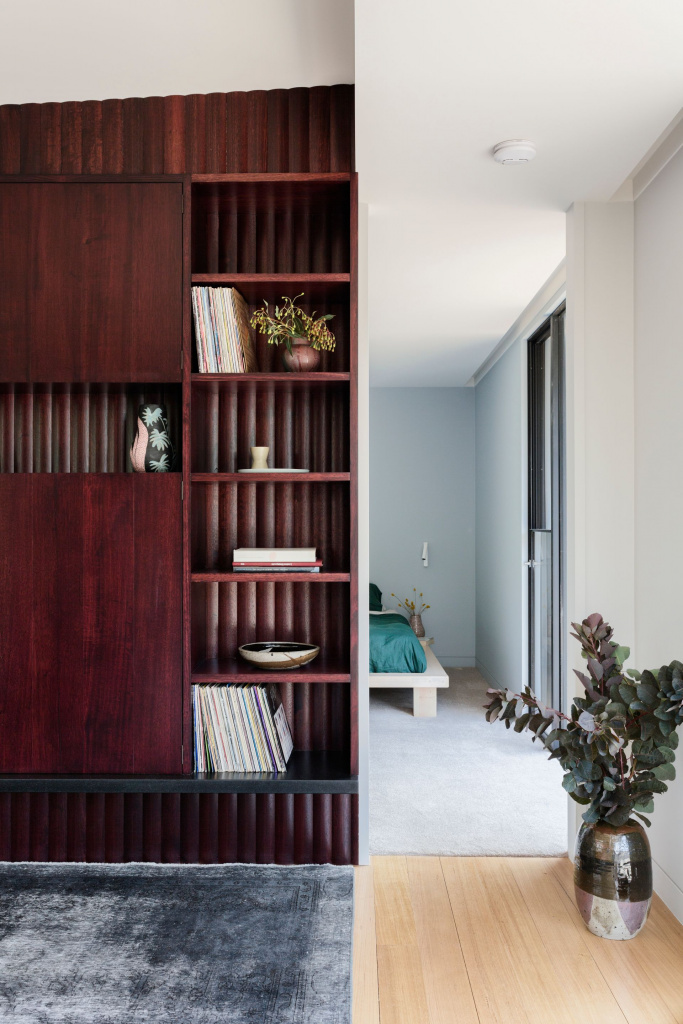
For Chromatic Fantastic, Brustman took this concept a step further by exploring synaesthesia or the neurological trait that merges senses that aren’t normally connected, in this instance, seeing colour through music or music through smell.
“I’m very interested in music and how it makes you feel. I’m also very interested in the alchemy of colour and how these really interesting combinations of colour can give you a sense of wonderment. This exhibition explored the relationship between these two things.”
The standout piece was a sculptural installation of 20 identical record cabinets painted an extensive gradation of colour scale.
The cabinets were built by Pro Sculpt Project Solutions’ Matt Staples from Brustman’s design then hand-finished by the designer herself, a process she says involved trial and error as she experimented and changed colour combinations based on how the paints responded with the wood and with each other.
“The thought process was to think about furniture as furniture, but also as installation. The furniture itself has a language that is developed around a variety of shapes and symbols that for me linked into this idea of scale and music and colour.”
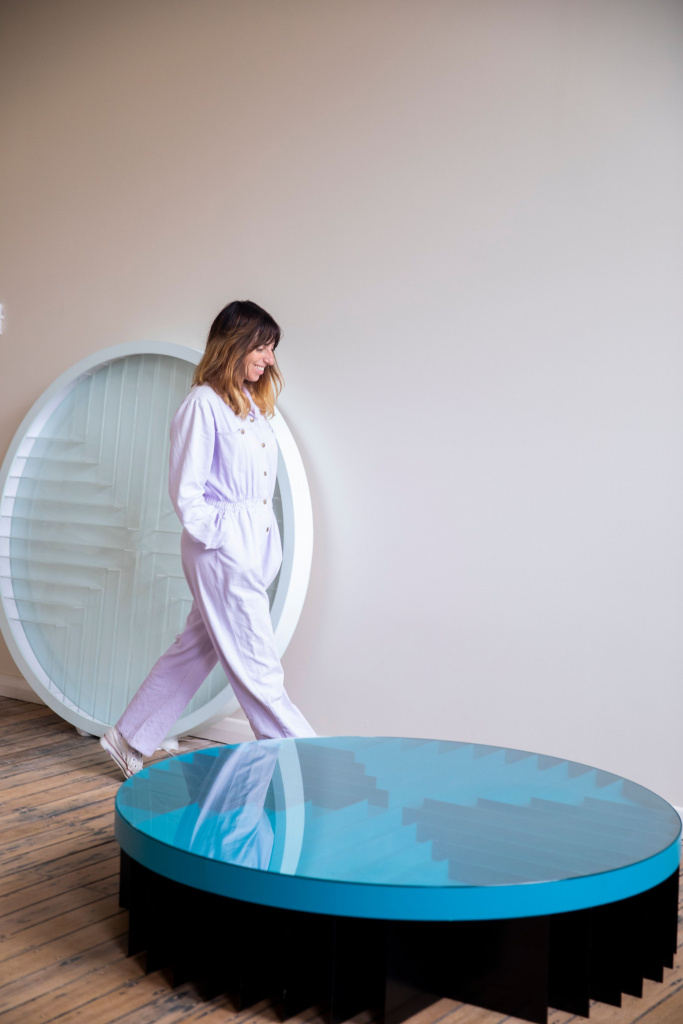
Chromatic Fantastic, like much of Brustman’s work, had a theatrical vein, drawn from years working as a set designer with companies like Red Stitch Actors’ Theatre. Brustman feels comfortable moving between temporal spaces and spaces outside of classic interior design and often, her work, be it exhibition or residential, is infused with story.
“In everything I do, I attempt to create narratives within spaces, as well as articulate focal points of visual spectacle within the domestic space.”
In her Melbourne Design Week exhibition, the combination of colours was stimulating and exciting, rich and luscious, weaving a story about how good design responds to human needs, inviting the visitor to consider spatial experience and how our environment impacts on our experience of life.
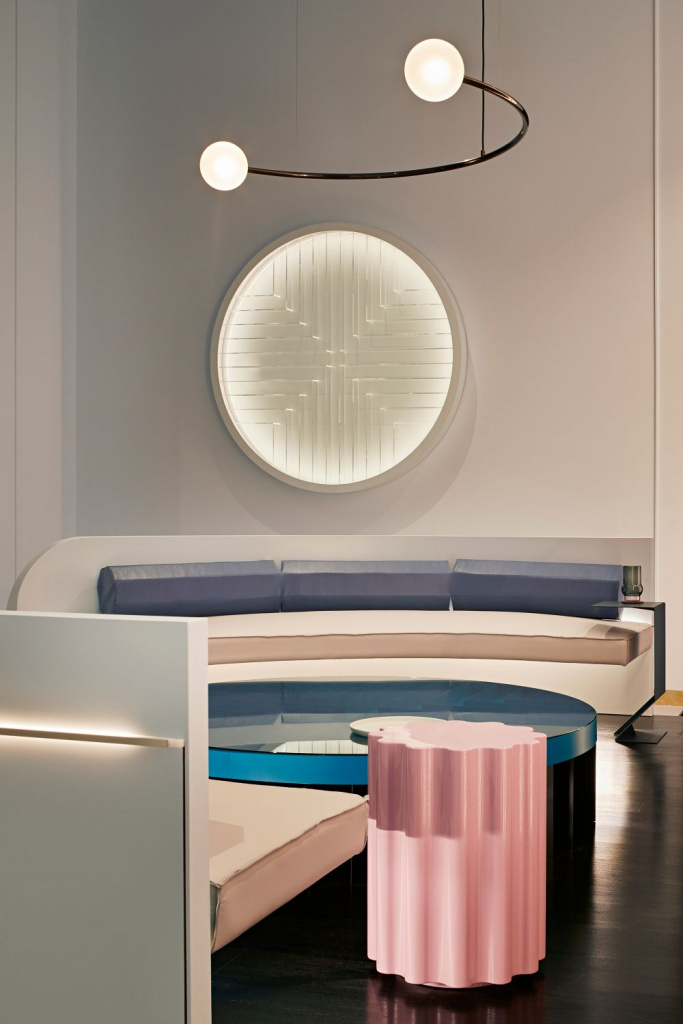
Brustman’s last major exhibition – an entry in the NGV Rigg Design Prize 2018 – offered an infinitely more personal exploration of her own domesticity with references to her childhood, adult life and work as a designer encapsulated in a fantastical lounge room-cum-stage-cum-conversation pit.
Inner-Terior was Brustman’s proposition for domestic life, giving us permission to explore attitudes and sentiments we don’t associate with our homes or our occupancy of them. It was also a beautifully executed homage to the 1980s film Xanadu, the Art Deco bandshells of the 1920s, European retrofuturistic design from the 1960s and roller rinks – all things near and dear to Brustman.
“There is a wonderful freedom in exhibiting, you get to explore ideas that you may not get to explore as an interior designer because there are so many other factors at play including your clients and budgets and architectural constraints,” says Brustman.
“But it’s more exposing, putting something out there that’s very personal and obviously being presented in a public sphere and therefore up for critique.”
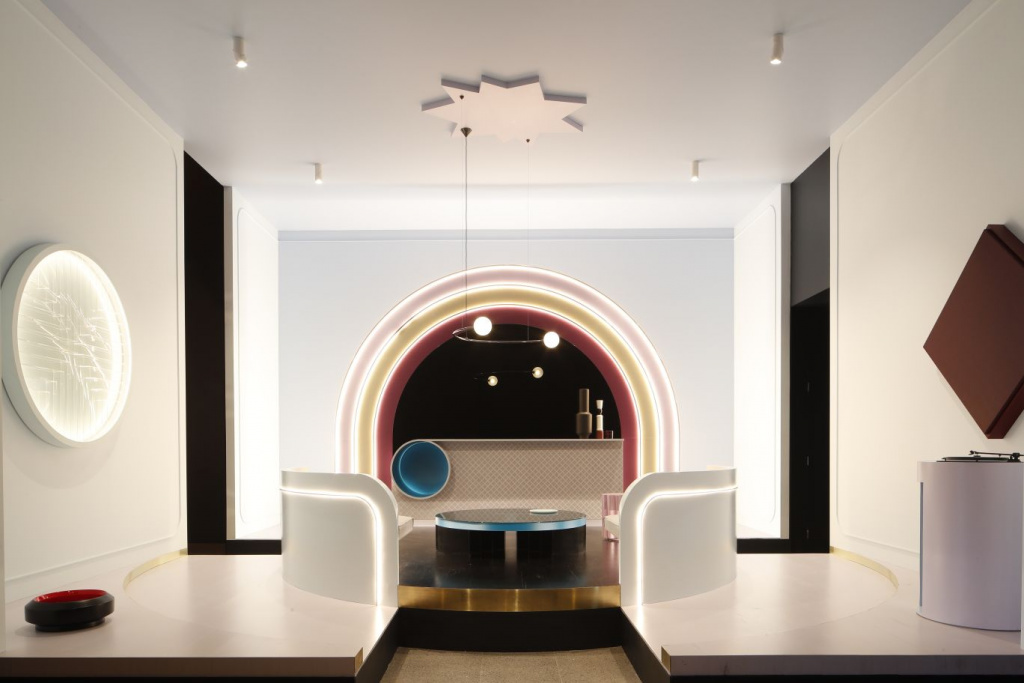
Danielle Brustman is partway through a year-long residency at Collingwood Yards supported by the Bank of Melbourne and Contemporary Arts Precinct. She is also currently working on a couple of commercial interior design projects including a health/spa clinic and a childcare centre.
You Might also Like

